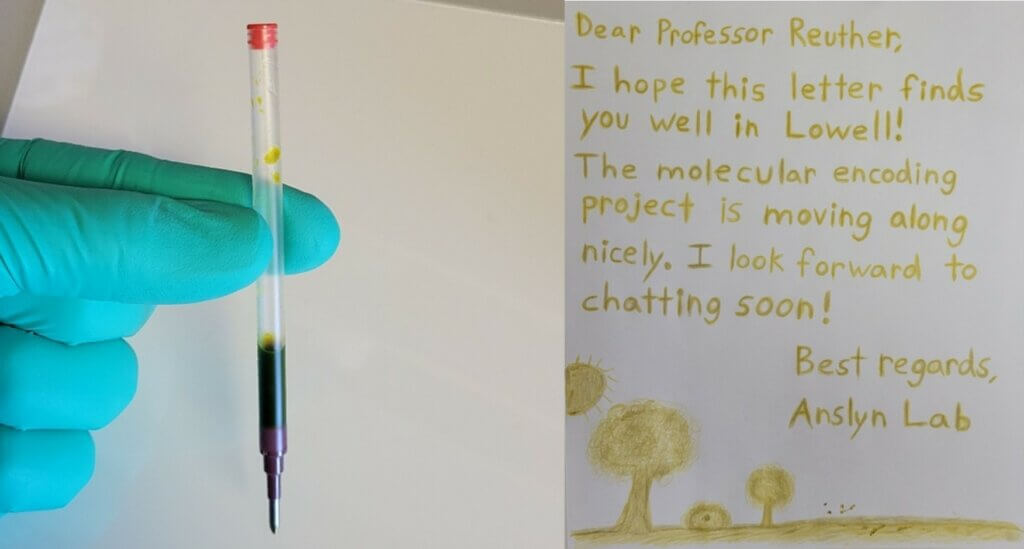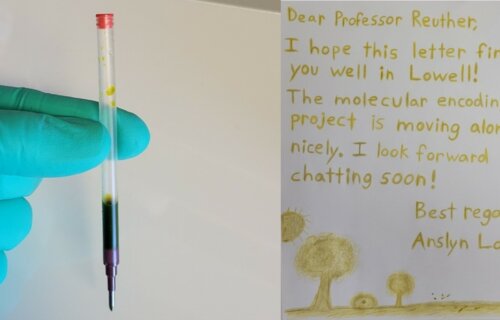AUSTIN, Texas — Invisible ink has been taken to the next level after scientists hid a digital file with text from “The Wonderful Wizard of Oz” inside ink on a letter. They say the results of their experiment are reliable enough for the method to be used by anyone wanting to hide secret messages in letters or plastic objects.
With recorded information now almost entirely digitized, more people are looking to use digital encryption to keep their messages hidden and private. This requires a digital key to lock and unlock the information so only the intended recipient can read it. Encryption uses algorithms to jumble up information which can be revealed only by entering the correct code, like a pin number or password.
Researchers have been developing ways to store encryption keys in polymers, which are long chains of molecules, known as monomers, linked together. They can be artificial, like in plastics, or natural, like DNA helices. The problem is that the longer the polymer, the more difficult it becomes to work out what information is stored there.
So chemist Dr Eric Anslyn and his colleagues at the University of Texas at Austin developed a method to decode information from polymers in a sequential way so they can be read more easily. The process involves using liquid chromatography-mass spectrometry (LC/MS) – a method of reading chemical information.

Researchers wanted to see if their method would reveal a complex key stored in a unique mixture of polymers hidden inside ink that would then be used to reveal a text file. First, the chemists generated a 256-character-long binary key which could encrypt and decrypt text files when entered into an algorithm. They then encoded the key into eight polymers each made of 10 monomers, the molecules that bind together to form polymers.
The eight pieces of encoded information would have to fit together in the correct sequence to unlock the binary key and the directions of how to do this were stored in a monomer at the end of each polymer. Then the researchers mixed these eight polymers together and devised a step-by-step method of reading the polymers using LC/MS that when followed, would reveal how they were originally designed and make the encoded information available.
Finally, one group of the researchers combined the polymers with soot and two colorless liquids – glycerine and isopropanol – to make an ink which they used to write a letter to other scientists who did not know the encoded information.
Those scientists extracted the ink from the paper and followed the same sequential analysis created by Dr. Anslyn and his colleagues to reconstruct the 256-character binary key. When they entered this key into the algorithm, they found a plain text file of “The Wonderful Wizard of Oz.”
The research is published in the journal ACS Central Science.
Report by South West News Service writer Danny Halpin.
